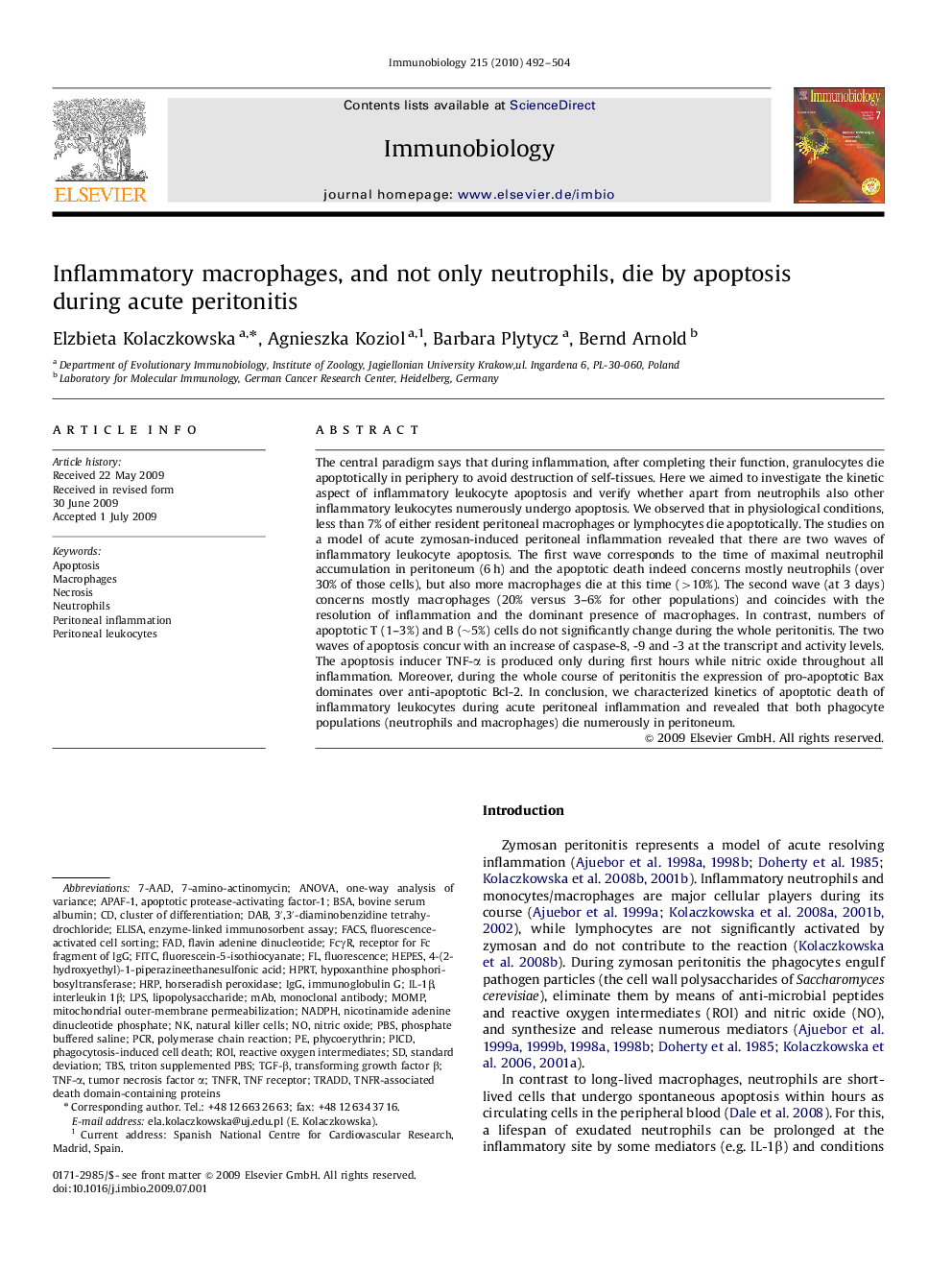| Article ID | Journal | Published Year | Pages | File Type |
|---|---|---|---|---|
| 2183603 | Immunobiology | 2010 | 13 Pages |
The central paradigm says that during inflammation, after completing their function, granulocytes die apoptotically in periphery to avoid destruction of self-tissues. Here we aimed to investigate the kinetic aspect of inflammatory leukocyte apoptosis and verify whether apart from neutrophils also other inflammatory leukocytes numerously undergo apoptosis. We observed that in physiological conditions, less than 7% of either resident peritoneal macrophages or lymphocytes die apoptotically. The studies on a model of acute zymosan-induced peritoneal inflammation revealed that there are two waves of inflammatory leukocyte apoptosis. The first wave corresponds to the time of maximal neutrophil accumulation in peritoneum (6 h) and the apoptotic death indeed concerns mostly neutrophils (over 30% of those cells), but also more macrophages die at this time (>10%). The second wave (at 3 days) concerns mostly macrophages (20% versus 3–6% for other populations) and coincides with the resolution of inflammation and the dominant presence of macrophages. In contrast, numbers of apoptotic T (1–3%) and B (~5%) cells do not significantly change during the whole peritonitis. The two waves of apoptosis concur with an increase of caspase-8, -9 and -3 at the transcript and activity levels. The apoptosis inducer TNF-α is produced only during first hours while nitric oxide throughout all inflammation. Moreover, during the whole course of peritonitis the expression of pro-apoptotic Bax dominates over anti-apoptotic Bcl-2. In conclusion, we characterized kinetics of apoptotic death of inflammatory leukocytes during acute peritoneal inflammation and revealed that both phagocyte populations (neutrophils and macrophages) die numerously in peritoneum.
